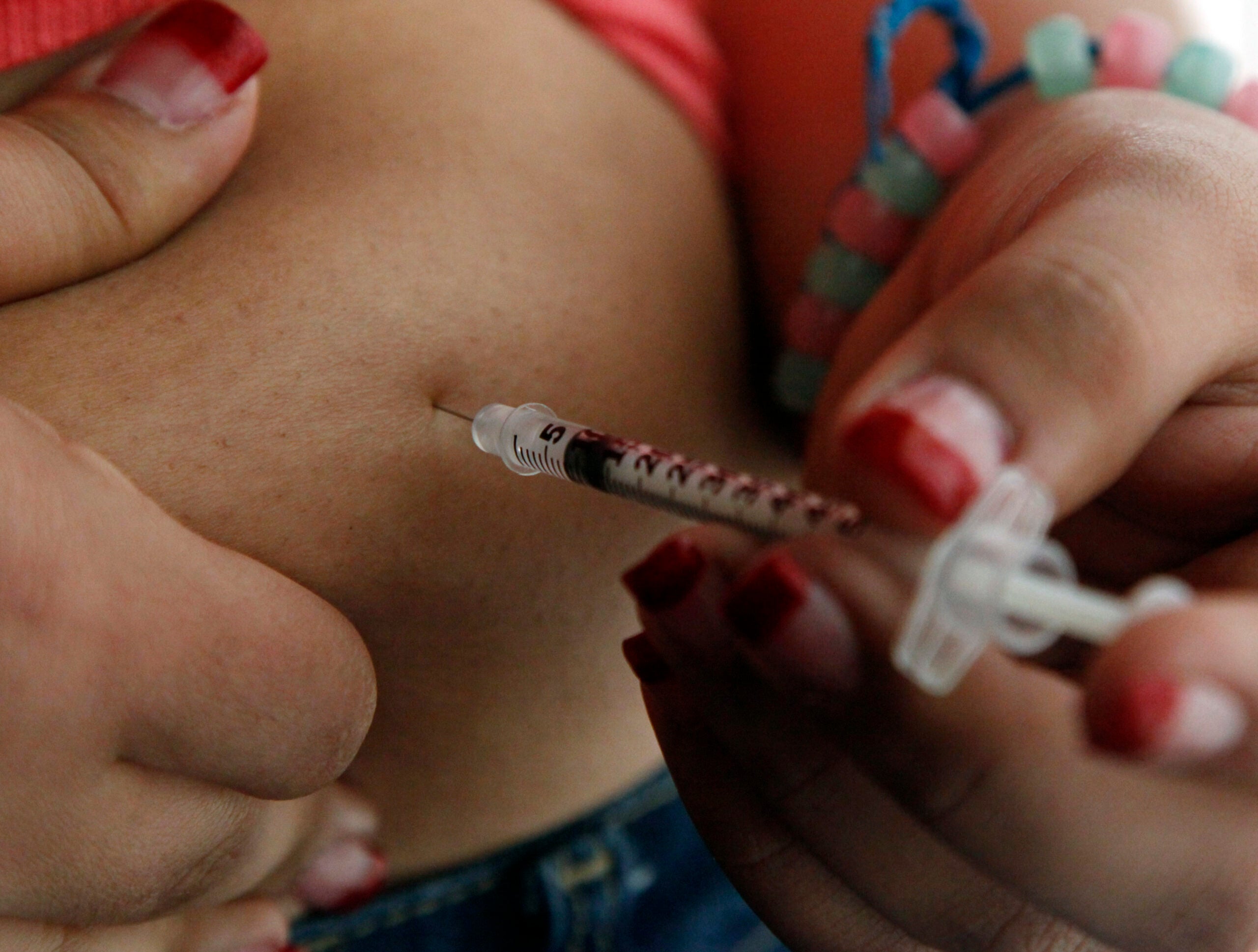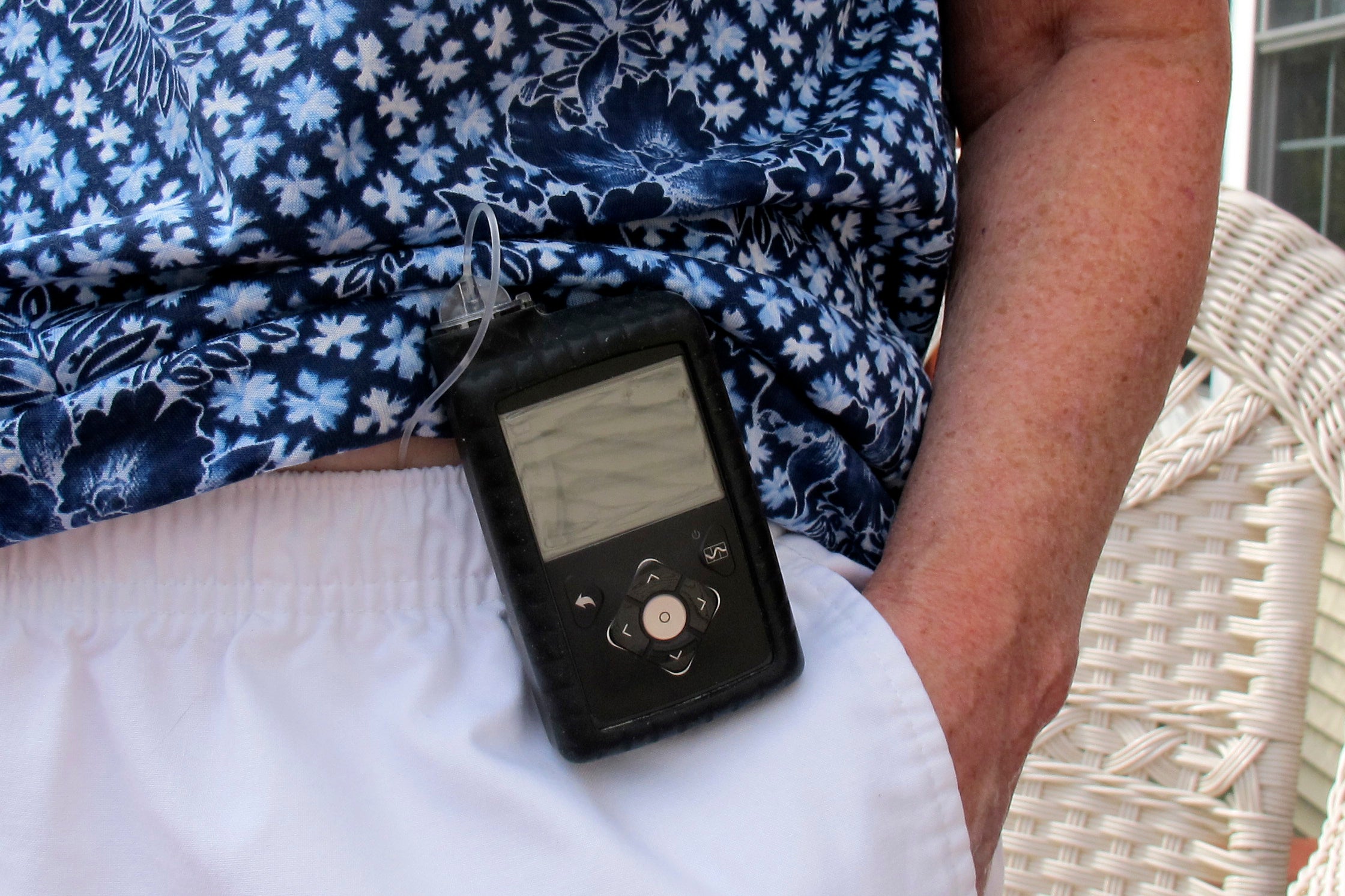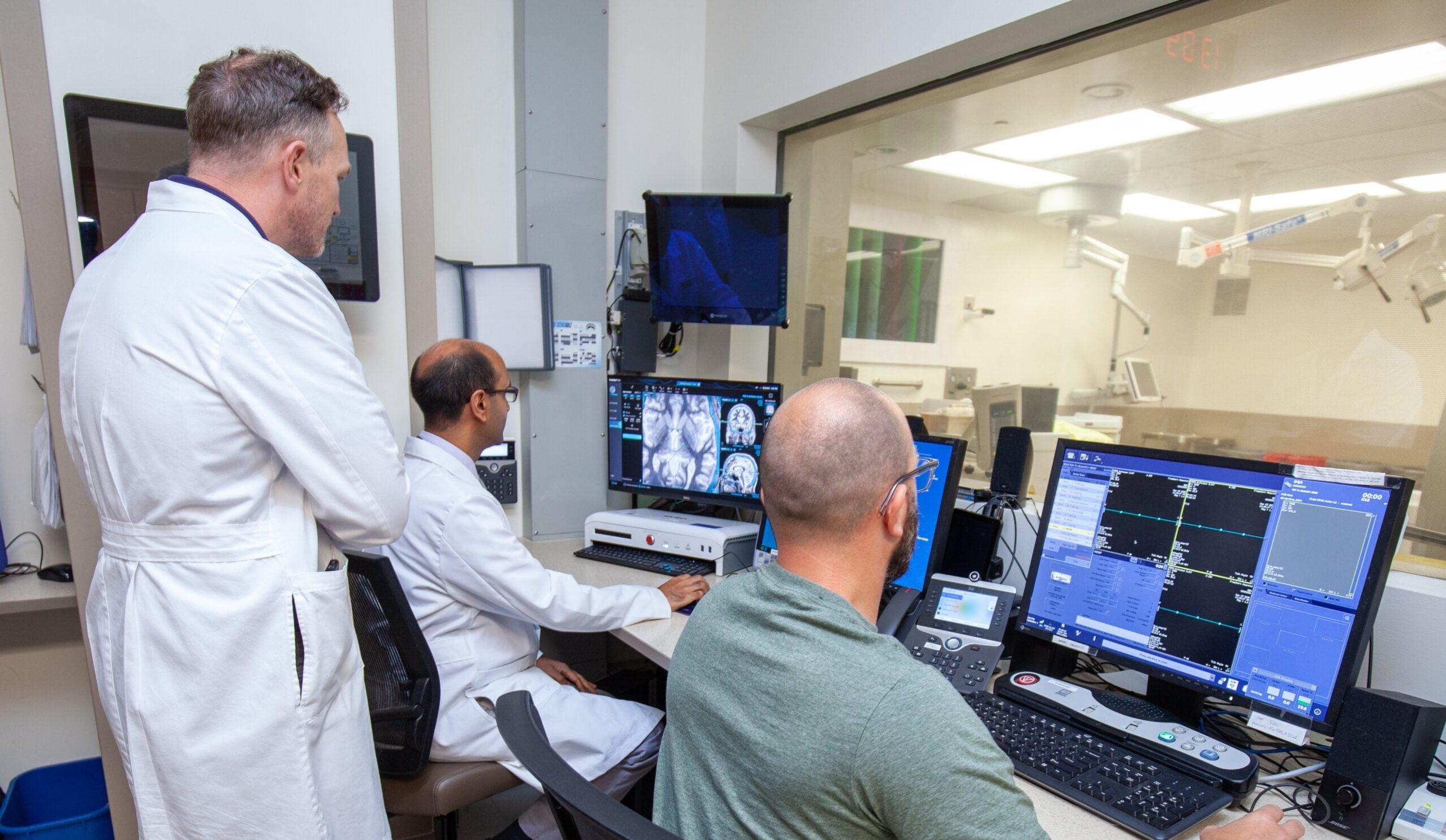Two out of 5 adults are expected to develop type 2 diabetes during their lifetime, according to the Wisconsin Department of Health Services, and many people won’t have any symptoms until much later in their disease progression.
On WPR’s “The Larry Meiller Show,” Dr. Kim Hardy, a family medicine practitioner at Gundersen Lutheran Health Center in La Crosse, said that unlike type 1 diabetes, which generally starts in childhood, type 2 diabetes is caused by lifestyle and other risk factors that create problems in the pancreas.
The body becomes resistant to insulin — an important hormone that regulates blood sugar — and doesn’t produce it as efficiently.
“So, blood sugars go up and are no longer controlled,” Hardy said.
That can lead to heart attacks, strokes, blindness, kidney failure and loss of toes, feet or legs.
“But as adults, we don’t typically have any signs or symptoms until we’ve have it for a long time,” Hardy said. “So, that’s why it’s really important to see your physician, your health care provider on a regular basis to do screen tests for this.”
Symptoms of diabetes include increased thirst and urination and blurred vision. But there are no symptoms of prediabetes, a precursor to diabetes that simply means a slight elevation in a person’s fasting blood sugar. Blood sugars anywhere from 100 to 125 milligrams per deciliter signal prediabetes.
Hardy said the only way to know whether folks have prediabetes and often type 2 diabetes is through a blood test.
“By knowing that someone has prediabetes or diabetes helps us to make lifestyle changes to prevent those long-term complications that can occur with diabetes,” she said.
News with a little more humanity
WPR’s “Wisconsin Today” newsletter keeps you connected to the state you love without feeling overwhelmed. No paywall. No agenda. No corporate filter.
Although excess weight is certainly a contributor to developing prediabetes and diabetes, Hardy said there are plenty of misconceptions that people with weight issues are not aware of their health, may not be trying to get healthier or are lazy.
She noted that for people who have type 2 diabetes, there could be major genetic factors at play. For example, if both parents developed type 2 diabetes, their children are five to six times more likely to develop it, even despite healthy lifestyle choices.
“There’s a big genetic role that comes into this that I think most people are not aware of,” she said.
Risk factors for getting diabetes
The western diet that’s focused on consumption of red and processed meat, high fat dairy products, desserts and sugar-sweetened drinks isn’t doing Americans any favors.
“It’s tough for us to make these healthy lifestyle changes, especially when we’re on the go, when we’re busy, when we’ve got kids and activities,” she said. “It takes time to prepare healthier foods, and thus our society has kind of pushed us in the direction of having weight issues and developing a lot of these long-term health issues.”
Stress can play an indirect role, too, Hardy said. While there aren’t any studies that directly link type 2 diabetes with stress, feeling stressed can cause a person to overeat or to eat nutritionally deficient comfort food.
Lack of sleep is another important risk-factor, and sleep quality is directly related to diabetes, Hardy said. Fewer than five to six hours of sleep, or greater than eight or nine hours of sleep per night puts an adult at increased risk for type 2 diabetes.
Extra weight in belly increases risk. Internal fat around the organs also increases risk.

What’s there to do about it?
Not surprisingly, changes to diet and exercise regimens are the main factors that help bring blood sugar numbers under control.
But to practically make those changes, start small. One of the first things a person with prediabetes or diabetes can do is meet with a diabetic educator who can provide information about the types of foods to eat and what to stay away from, especially food that might have hidden sugar.
“For example, if I eat a low-fat TV dinner … there may actually be added sugar in there. So it’s really important to get some education on the types of foods to eat,” Hardy said.
Hardy recommends a Mediterranean diet and one that’s richer in bitter herbs such as arugula, eating more raw vegetables and drinking a lot of green tea.
She said what a person eats is important, but so too is when they eat. Eating consistently throughout the day to prevent blood sugars from fluctuating so much helps a person’s overall health.
If a person is prone to big swings in blood sugar results, aim to eat some protein in combination with some fiber to maintain blood sugars.
“It’s really those big swings in the blood sugar that we think can cause a lot of complications,” she said. “So, even if you’re fairly well controlled but you tend to go up quite a bit at nighttime, maybe after a large meal, that can have some bad consequences. Trying to space it out throughout the day a little bit more is going to help your blood sugars and help your overall health.”
As far as exercise goes, aim for 150 minutes per week, whether that’s all at once or spread out over a few days. Make sure that includes moderate aerobic activity — for example, taking a brisk walk — and weight training.
Supporting someone who has diabetes
Each diabetes diagnosis is different and each individual struggles with different parts of the disease, so it’s important to learn the specific needs of the person in your life.
Because there are so many components that doctors and researchers don’t yet understand about diabetes, it can be helpful to remind diabetics and loved ones that developing diabetes isn’t a failure.
“This chroinc disease does not define who you are,” Hardy said. “It is not your fault that you developed this.”





